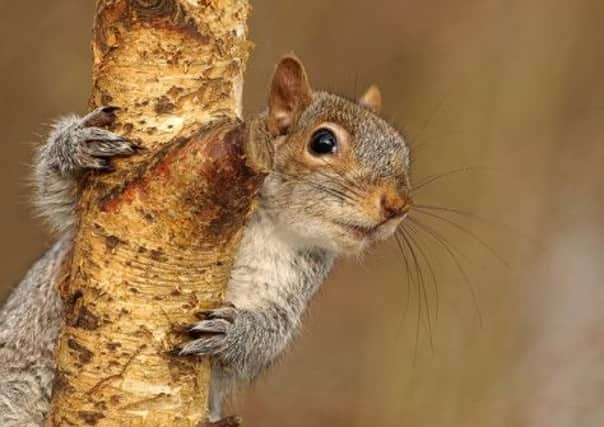Bump in grey squirrel numbers puts landowners on alert


Thriving numbers of the non-native species are considered a major pest, with the damage caused to trees, parks and gardens amounting to a multi-million pound drain on the economy. They also predate on woodland birds.
The Forestry Commission said grey squirrels are thought to cause up to £10 million of damage a year to broadleaved and coniferous woodlands, while The European Squirrel Directive believes the total cost to the UK economy is approximately £14m.
Advertisement
Hide AdAdvertisement
Hide AdGraham Taylor, specialist woodland manager at forestry consultancy Pryor & Rickett Silviculture, said: “The squirrel population is likely to be amongst the highest we have seen for some time. Last year’s excellent mast season, particularly amongst beech, hornbeam, chestnut, small-leaved lime and many conifer species has allowed grey squirrel populations to respond to this increased food availability, with late broods and high survival rates leading to increased populations and higher control levels being necessary.”
Ian Court, wildlife conservation officer for Yorkshire Dales National Park Authority (YDNPA), said the Park was managing the Dales woodlands carefully to protect the red squirrels that are known to populate the north western area of the National Park.
Mr Court explained: “Non-native grey squirrels out-compete the native red squirrel and also carry the squirrelpox virus which, if passed on to reds, can prove fatal and decimate the population.
“The YDNPA is working with landowners, forest managers and other organisations to implement appropriate woodland management where reds are present, and to help co-ordinate control of greys where they pose a threat to red squirrel populations.”
Advertisement
Hide AdAdvertisement
Hide AdAn action plan was published by the Forestry Commission at the start of the year to help combat the rising threat posed by greys.
Chris Sorensen, England incentives manager at the Forestry Commission, said: “There needs to be more long term and collaborative action to reduce the threats and impacts from grey squirrels - both on the native reds and from preventing woodland from being healthy, resilient and productive.
“Grey squirrel populations have remained so high that they continue to threaten the survival of the native red squirrel - red squirrels are confined in England to just a small number of areas.”
An EU ban on the use of warfarin - a drug which can currently be used as pre-baited corn to cull grey squirrels in the UK - as a plant protection measure in September, means the Forestry Commission is advising landowners to either shoot or trap greys. If reds are present the landowner must only live-trap squirrels and dispatch of them humanely.
Advertisement
Hide AdAdvertisement
Hide AdThe Country Land and Business Association (CLA) says the warfarin ban is a problem.
Dorothy Fairburn, regional director for the CLA in Yorkshire, said: “The Forestry Commission’s action plan is hampered by the failure to reverse the decision to ban the use of Warfarin which is by far the most effective tool in controlling grey squirrels. We will continue to press for its reintroduction.”
The Forestry Commission said the manufacturer of Warfarin had not applied to renew its now-expired licence for the product.
New funds to manage woodlands
Grey squirrel control options will exist in the new Countryside Stewardship grants scheme as part of the new Common Agricultural Policy.
Advertisement
Hide AdAdvertisement
Hide AdFurther details of the new scheme will be available in the summer but the Forestry Commissions has confirmed that a new five-year ‘Woodland Improvement Multi-Annual option’ will include grey squirrel control.
Landowners will be paid £100 per hectare per year for five years for controlling grey squirrel populations at woodland sites that the Forestry Commission agrees are in need of improvement.